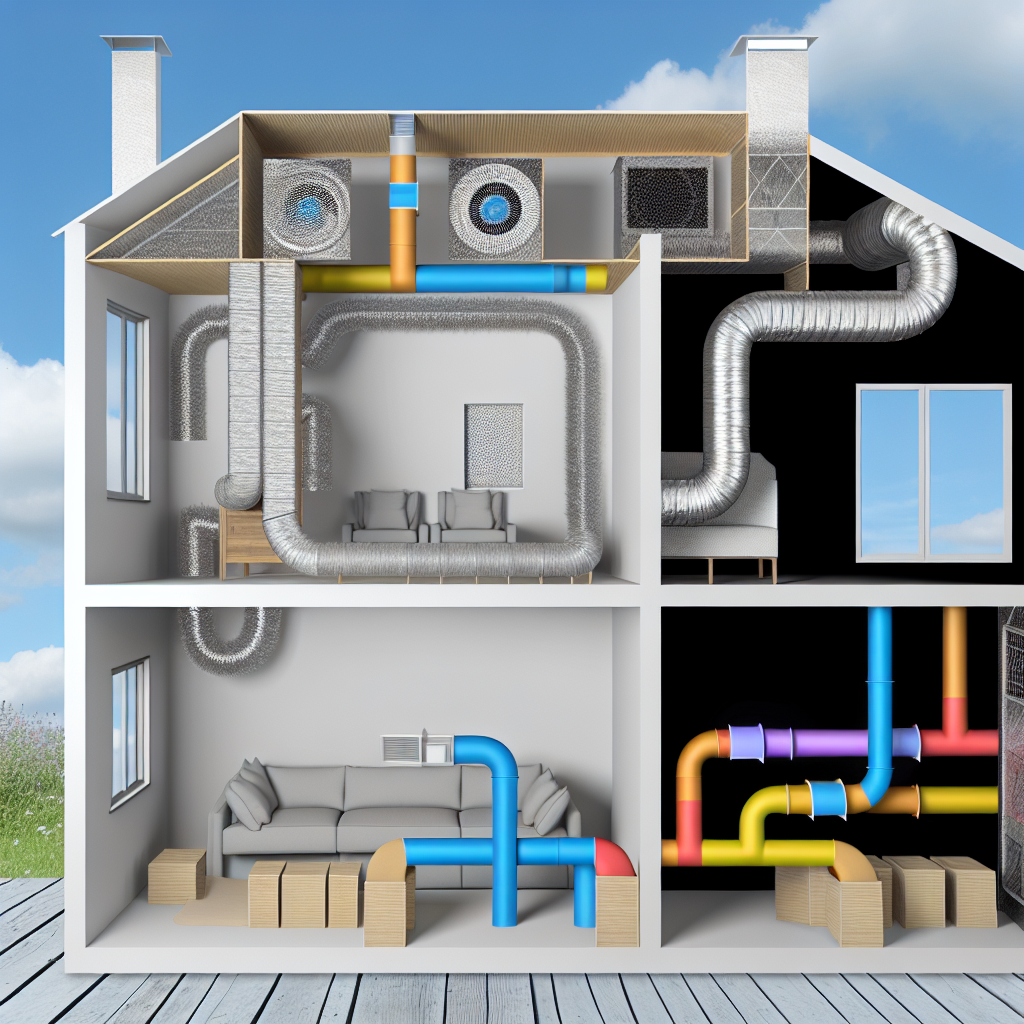Published: Dec 11, 2024

When it comes to home comfort, many factors play a crucial role, with HVAC systems standing at the forefront. However, one component that often gets overlooked is the ductwork design. Ductwork is the network of pathways that deliver heated or cooled air from your HVAC system to various rooms in your home. The design and condition of your ductwork can significantly impact the comfort levels in your living spaces.
One of the primary reasons why ductwork design is crucial is its impact on energy efficiency. A well-designed ductwork system ensures that air flows efficiently throughout your home, minimizing energy waste. On the other hand, poorly designed or leaky ductwork can lead to air loss and decreased efficiency, resulting in higher energy bills.
Proper ductwork design plays a significant role in maintaining consistent temperatures throughout your home. When ducts are poorly designed or insulated, you may experience hot or cold spots in different areas of your house. This can lead to discomfort and the need to constantly adjust your thermostat, which can strain your HVAC system and increase energy consumption.
In addition to temperature control, ductwork design also impacts indoor air quality. Leaks or poor insulation in ducts can allow dust, allergens, and pollutants to enter the air circulation, leading to poor air quality in your home. This can exacerbate allergies and respiratory issues for you and your family members.
One common issue with ductwork design is improper sizing. Ducts that are too small can restrict airflow, making it harder for your HVAC system to heat or cool your home effectively. Conversely, oversized ducts can lead to air velocity issues, causing uneven distribution of conditioned air.
Insufficient insulation in ductwork can result in energy loss as air travels through unconditioned spaces like attics or crawl spaces. This not only decreases energy efficiency but also makes it harder to maintain comfortable temperatures in your home.
Leaks or blockages in ductwork can significantly impact airflow and reduce the overall efficiency of your HVAC system. These issues can go unnoticed for a long time, leading to increased energy bills and decreased comfort in your home.
One of the most significant benefits of proper ductwork design is improved comfort in your home. With a well-designed system, you can enjoy consistent temperatures in every room, eliminating hot and cold spots. This ensures a comfortable living environment for you and your family.
Proper ductwork design not only enhances comfort but also helps you save on energy costs. By ensuring efficient airflow and minimal energy loss, a well-designed ductwork system reduces the workload on your HVAC system, leading to lower energy consumption and decreased utility bills.
When ductwork is designed and installed correctly, it helps your HVAC system operate more efficiently and effectively. This can extend the lifespan of your system by reducing wear and tear caused by overworking to compensate for poor ductwork design.
In conclusion, the design of your ductwork system plays a critical role in determining the comfort and energy efficiency of your home. By ensuring proper sizing, insulation, and maintenance of your ductwork, you can enjoy a more comfortable living environment while saving on energy costs. Don't overlook the importance of ductwork design in achieving optimal home comfort and efficiency.

Our expert technicians are ready to assist you 24/7!
Contact Us Today!Read our latest articles for helpful information about heating, cooling, and air quality.
Regular HVAC maintenance is essential for improving energy efficiency, extending the lifespan of your system, enhancing...
Read MoreImplement these 10 tips to enhance the air quality in your home, promoting a healthier living environment for you and y...
Read MoreRegular seasonal HVAC maintenance is essential for maximizing system efficiency, ensuring indoor air quality, preventing...
Read MoreSmart thermostats offer energy savings, convenience, learning capabilities, and integration with smart home systems, mak...
Read More